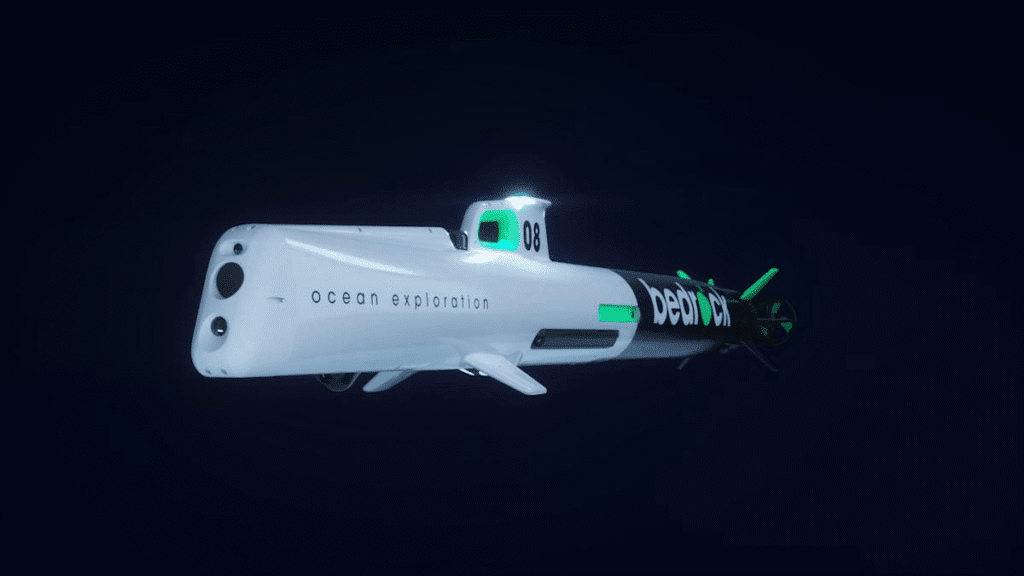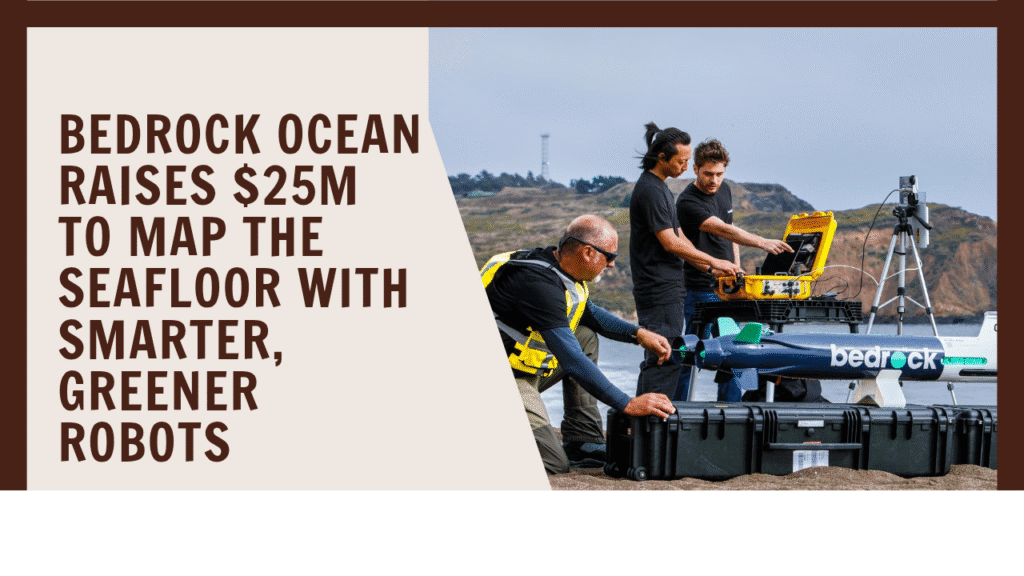We know more about the surface of the moon than the floor of our oceans — a mystery that’s persisted not because of lack of curiosity, but because of how tough it is to actually get down there. The ocean is vast, dark, and hostile to humans. But now, a new wave of robotics is changing all that.
One of the players leading this revolution is Bedrock Ocean, a startup that’s just closed a $25 million Series A-2 funding round, led by Primary and Northzone, with participation from Autopilot, Costanoa Ventures, Harmony Partners, Katapult, and Mana Ventures, the company exclusively told TechCrunch.
Rethinking Ocean Mapping

Instead of relying on massive fuel-hungry ships and loud, disruptive sonar blasts, Bedrock has built sleek autonomous underwater vehicles (AUVs) that quietly roam the seafloor. Each one can operate for up to 12 hours on lithium-ion batteries, using sonar and magnetic sensors to create detailed maps.
“These big ships cost a fortune to operate, they need people onboard 24/7, and they disturb marine life,” said Brandon Mah, COO of Bedrock Ocean. “The dream has always been: can we replace traditional ships? And we think we’re getting pretty close.”
Their AUVs aren’t entirely ship-free yet — they’re still launched from a vessel — but once in the water, they run independently. According to Mah, two of Bedrock’s AUVs can do the work of one full-size survey ship, and a single 40-foot vessel could carry a dozen of them at once.
Custom Tech, Inside and Out
Bedrock designs and manufactures its own AUVs, each costing under $1 million, along with custom-built software to control the vehicles and process the data they collect. The subs store and even process some data onboard. Once they surface, they upload it to the ship via Wi-Fi, and then a Starlink antenna beams it to the cloud, making near real-time monitoring possible.
“We can see what the AUVs are capturing almost immediately — whether it’s good quality, or if there’s something interesting we should look at more closely,” Mah explained.
Because they operate just 5–10 meters above the ocean floor, Bedrock’s AUVs can use less powerful, more targeted sonar. That’s not only better for battery life — it’s also safer for marine mammals, since the sonar frequency is outside their hearing range and used closer to the bottom, far from where whales or dolphins might be swimming.
Precision Meets Speed
When it comes to placing items or marking points on the seafloor, Bedrock’s robots have an accuracy of 1 to 2 meters. That’s not quite as precise as traditional ship-based mapping (which can reach sub-meter levels), but Mah says many seafloor operations don’t need that ultra-fine precision.
“Sure, offshore wind developers might want sub-meter accuracy at the start of a project,” he said. “But when it comes time to actually build, two meters is often good enough — and we can get that data to them much faster.”
Catching the Navy’s Eye
Over the past two quarters, Bedrock has been doing paid survey work across industries — including offshore wind, oil and gas, and environmental assessments. Their biggest selling point? Speed.
“The turnaround is fast, and clients can see results almost in real-time,” Mah said. “We even demoed it to the U.S. Navy, and they were kind of blown away.”
With this new funding, Bedrock plans to grow both its fleet and its reach — helping build a better map of the deep, and maybe, one day, making the ocean as well-understood as the skies above.
Also Read : Apple Unveils Striking ‘Liquid Glass’ Redesign Across Operating Systems at WWDC 2025

